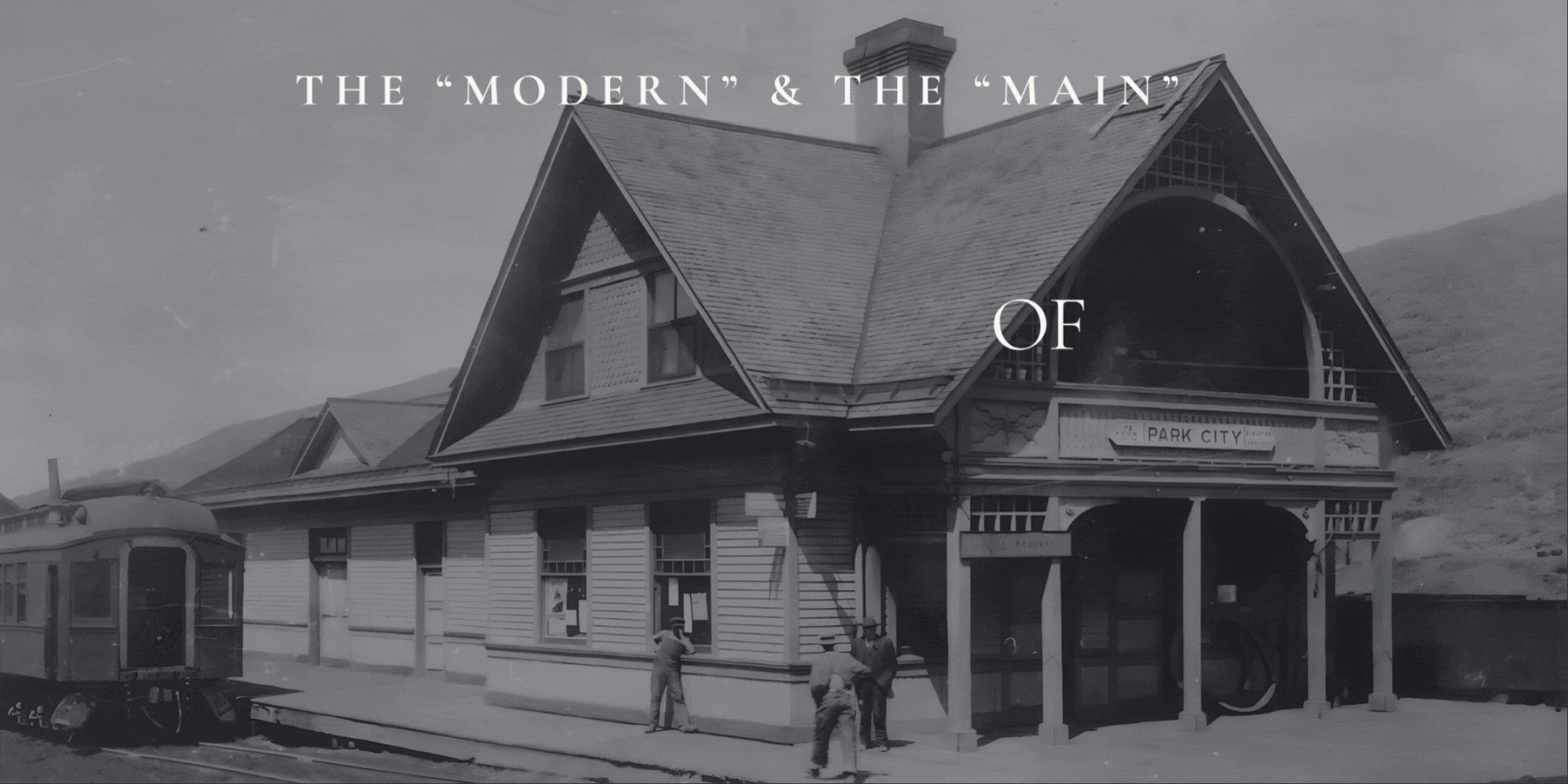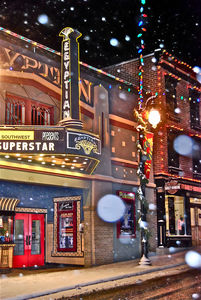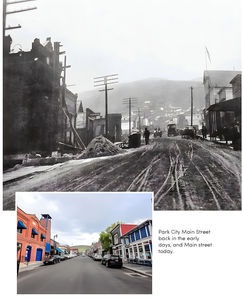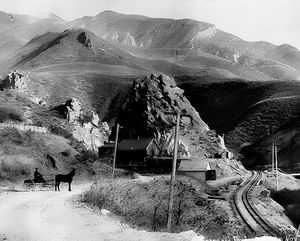
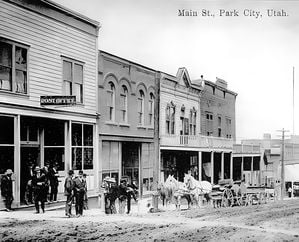
Historical Background
Park City, originally known as Parley’s Park City after Parley P. Pratt, an early Mormon leader, was founded in the 1860s during the silver mining boom in the Utah Territory. The discovery of silver veins in the surrounding mountains led to a rapid influx of miners and settlers. Main Street quickly became the heart of the town, lined with businesses, saloons, and other establishments catering to the mining community.
Mining Era to Decline
During the late 19th century, Park City’s mines produced a significant amount of silver, making it one of the wealthiest mining towns in the West.
One might be surprised to know that the town was praised as being the “ideal” place to live in Utah already in 1919, despite being a small mining community.
The Salt Lake Herald published a “Peace and Prosperity” edition of their paper on July 13, 1919 in which they included a write-up about the draw of Park City.
To miners they wrote about how mines in the Salt Lake region faced “blistering heat” and mines in the north a “biting frost.” Park City was a great place for a miner to operate, they said, because of its mild summers and winters, despite the heavy snowfall. Not only that, but miners were able to own nice little homes, making the town their permanent residence because “the great metal mines… furnish steady employment the year-round.” This steady employment, they mentioned, also extended to workers in “various mills, business houses and industrial enterprises.”
In addition to all of that, they noted that the working conditions in Park City mines were simply “the best.” Contributing to these “best” conditions were state-of-the-art safety equipment and labor saving devices.
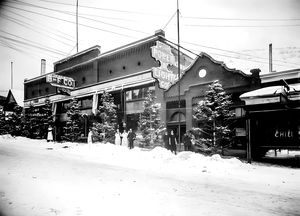
Part of the 400 block of Main Street, including the Blythe-Fargo & Company and the Utah Power & Light Co., 1920, showcasing that Park City had at least one fine merchant and steady electricity.
Credit: Park City Historical Society and Museum, Pop Jenks Collection
As the mining industry waned, the town faced economic decline in the early 20th century. However, the 1930s saw a resurgence as skiing gained popularity, laying the foundation for the town’s transformation into a winter sports destination.
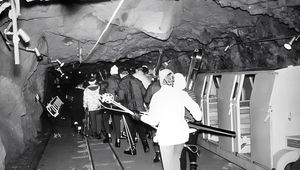
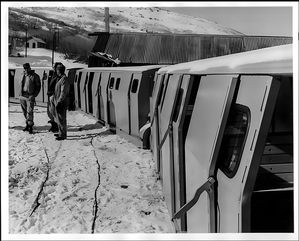
Tribune file photo The original caption on this 1966 photo says: “Spiro Tunnel Train waits outside the tunnel, just prior to starting its 25 minutes, 15,000 foot ride into the tunnel.”
Modernization and Preservation
The idea of an underground tram to Park City (then Treasure Mountain) ski terrain in 1964 was not new. Mine execs had been ferrying guests via mine tunnels in the 1920s through the 1940s to reach untouched Wasatch Mountain powder.
Miles of silver mining tunnels and shafts were cleverly utilized to cart friends and possible investors to high pine-scented snowfields.
In the early ‘60s, silver mining was losing profitability, so innovative minds turned to the tourist trade. A 1.2 million dollar federal loan plus infusions from various Park City groups enabled United Park City Mines to begin work on a resort complex designed to bolster winter recreation.
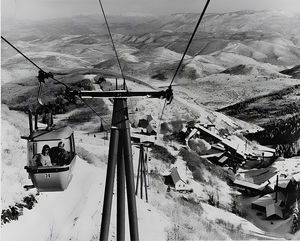
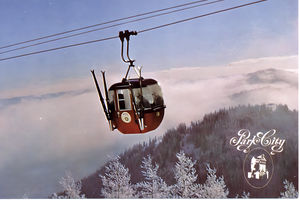
The late 20th century marked a pivotal period for Park City Main Street. The town’s unique charm, coupled with the nearby ski resorts, attracted not only winter enthusiasts but also individuals seeking a quaint, historic atmosphere. Efforts were made to preserve the architecture and character of the Main Street area, showcasing its mining heritage.
“In 2009, the city took it a step further by contracting Preservation Solutions and did a windshield survey to figure out which buildings were historic, which led to how we got our local historic site inventory,” says Grahn. Currently, Park City has 435 buildings deemed historic. Approximately 52 are located in what’s referred to as the Main Street district, which comprises Main Street and Heber Avenue. There are 12 historic mining sites that house 31 buildings, and the rest are residential areas.
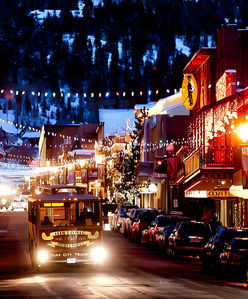
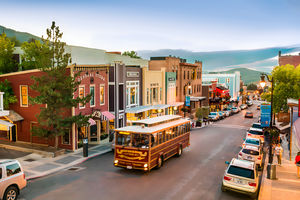
So it’s safe to say, with the Historical Society protecting our city’s past and future, we are secure from skyscrapers and towers looming over “Old Town” Park City.
As tourism grew, creative businesses began to flourish, introducing art galleries, boutiques, restaurants, and entertainment venues. This diversification of the local economy helped mitigate the town’s dependency solely on the ski industry.
Sundance Film Festival
A significant turning point came in 1981 with the establishment of the Sundance Film Festival by actor and director Robert Redford. The festival brought attention to Park City as a hub for independent cinema and creative expression. This event significantly contributed to the town’s modernization while respecting its historical roots.
Balancing Old and New
Throughout its evolution, Park City Main Street has managed to strike a delicate balance between old-world charm and modern amenities. Many historic buildings have been lovingly preserved and repurposed, often housing contemporary businesses while maintaining their original facades. This approach has created a unique atmosphere where visitors can stroll past 19th-century architecture while enjoying 21st-century experiences.
Community Engagement and Sustainability:
Park City’s commitment to its heritage and environment is evident in its sustainability initiatives and community engagement. Efforts have been made to make Main Street pedestrian-friendly, with an emphasis on walkability and green spaces. This approach aligns with the town’s values and ensures that modernization respects the town’s natural beauty and historic legacy.
In conclusion, Park City Main Street’s journey from a mining hub to a modern tourist destination is a testament to its ability to adapt while honoring its past. Through creative businesses, events like the Sundance Film Festival, and a dedication to preservation, the street has managed to evolve while retaining its unique character. This balance between old and new has transformed Park City Main Street into an iconic example of how history and modernization can harmoniously coexist.
Modern & Main: A Reflection of Us
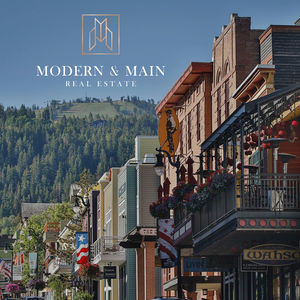
WHO WE ARE
At Modern & Main Real Estate, we believe in the perfect fusion of the new and the old, seamlessly blending the contemporary with the historic. Our name embodies the essence of this harmonious coexistence – the convergence of “Modern” and “Main.” This philosophy extends to both new and old homes, where we celebrate the diverse narratives that these properties carry.
Cities are born from the crucible of modern evolution, and at their heart lies the quintessential “Main” Street. From this central artery, cities expand and flourish, with each home forming a vital thread in the tapestry of community life. Our mission is to serve as custodians of this evolutionary journey, embracing the “Modern” while upholding the legacy of the “Main.”
In the realm of real estate, distinctions between brokerages can blur, leaving one to assume homogeneity. Yet, Modern & Main Real Estate stands as a beacon of differentiation. Our commitment to community involvement and philanthropy underscores our dedication to enriching the neighborhoods we serve. We don’t merely establish brand recognition; we are curators of a movement that redefines real estate. Innovation courses through our veins, encouraging us to continually challenge conventions and exceed the limits of excellence.
Our ascendancy in the market isn’t confined to a mere price point; it’s defined by an unparalleled experience. Our pursuit is guided by experience, a commitment to preserving the past, and a relentless drive to redefine the future. Join us in this journey as we navigate the intersection of history and innovation, crafting a legacy that mirrors the spirit of Main Street’s evolution.
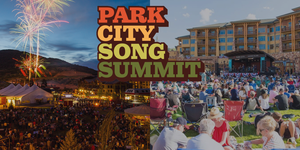
Today, as the heartbeat of Park City continues to echo through Main Street, a new chapter is being written – one that harmonizes with the spirit of this remarkable town. The Park City Song Summit, a celebration of music, artistry, and creative collaboration, finds its place among the echoes of history.
Sponsoring the Rhythm of Tomorrow:
At Modern & Main Real Estate, we’ve always believed in redefining boundaries, not just in real estate but in the entire tapestry of our community. That’s why we proudly sponsor the Park City Song Summit. This extraordinary musical journey embodies the same essence that makes Park City Main Street unique – a perfect blend of old and new, where creativity and innovation seamlessly merge with tradition.
By supporting the Song Summit, we don’t just invest in an event; we invest in the soul of our town. It’s a commitment to the harmonious evolution of Park City, where the melodies of the past resonate with the rhythms of tomorrow. Just as we respect the history of Main Street while embracing modernization, the Song Summit celebrates music’s timeless legacy while showcasing emerging talent and creativity.
Join us in this symphony of past and present, where history meets innovation, and tradition dances with the avant-garde. Together, we continue to be the threads that weave the rich tapestry of Park City’s ever-evolving story, connecting old and new, tradition and innovation, just like the harmonious blend of Modern & Main.
Connect with us for more information and for Tickets. Click Here: Park City Song Summit

